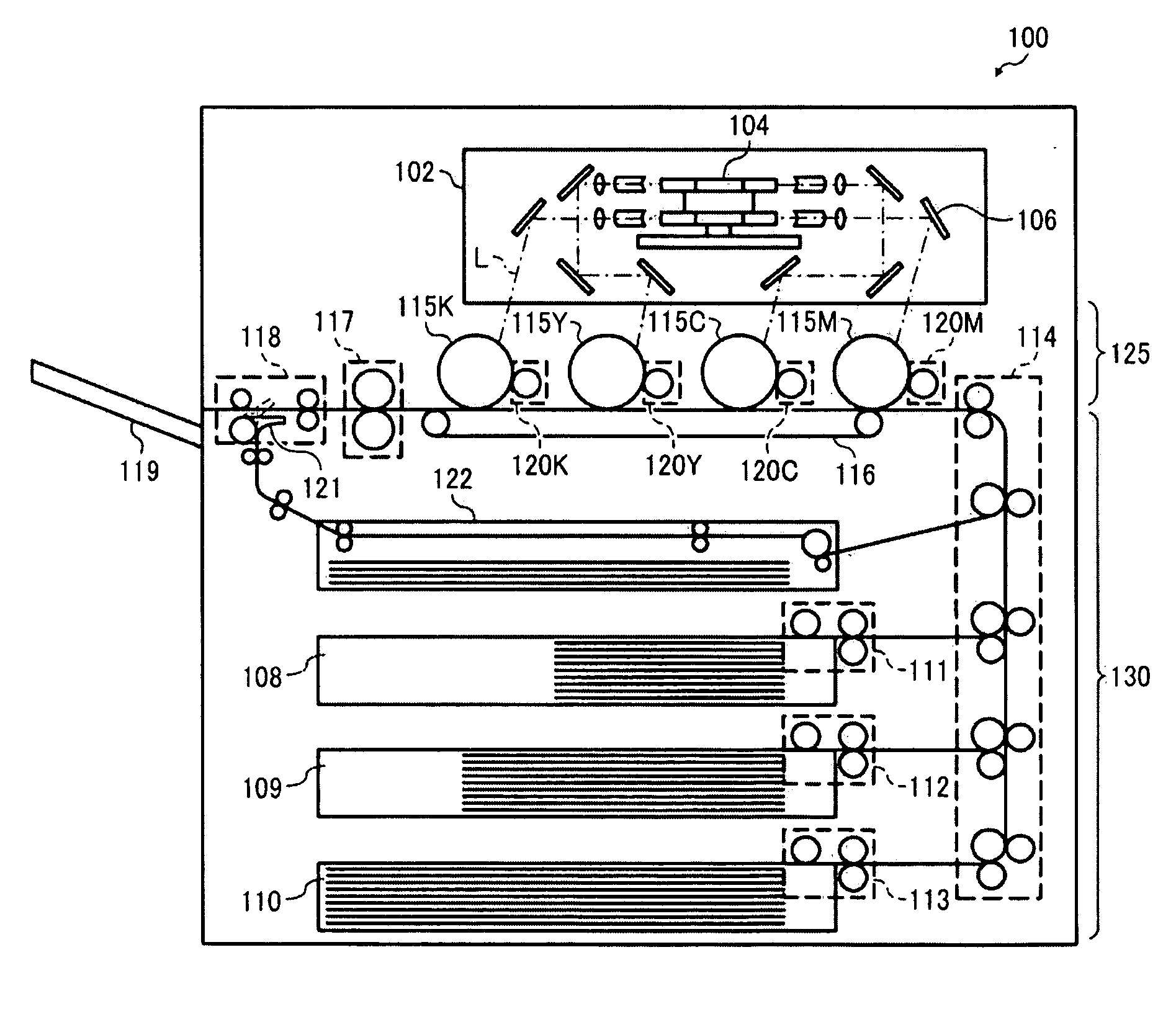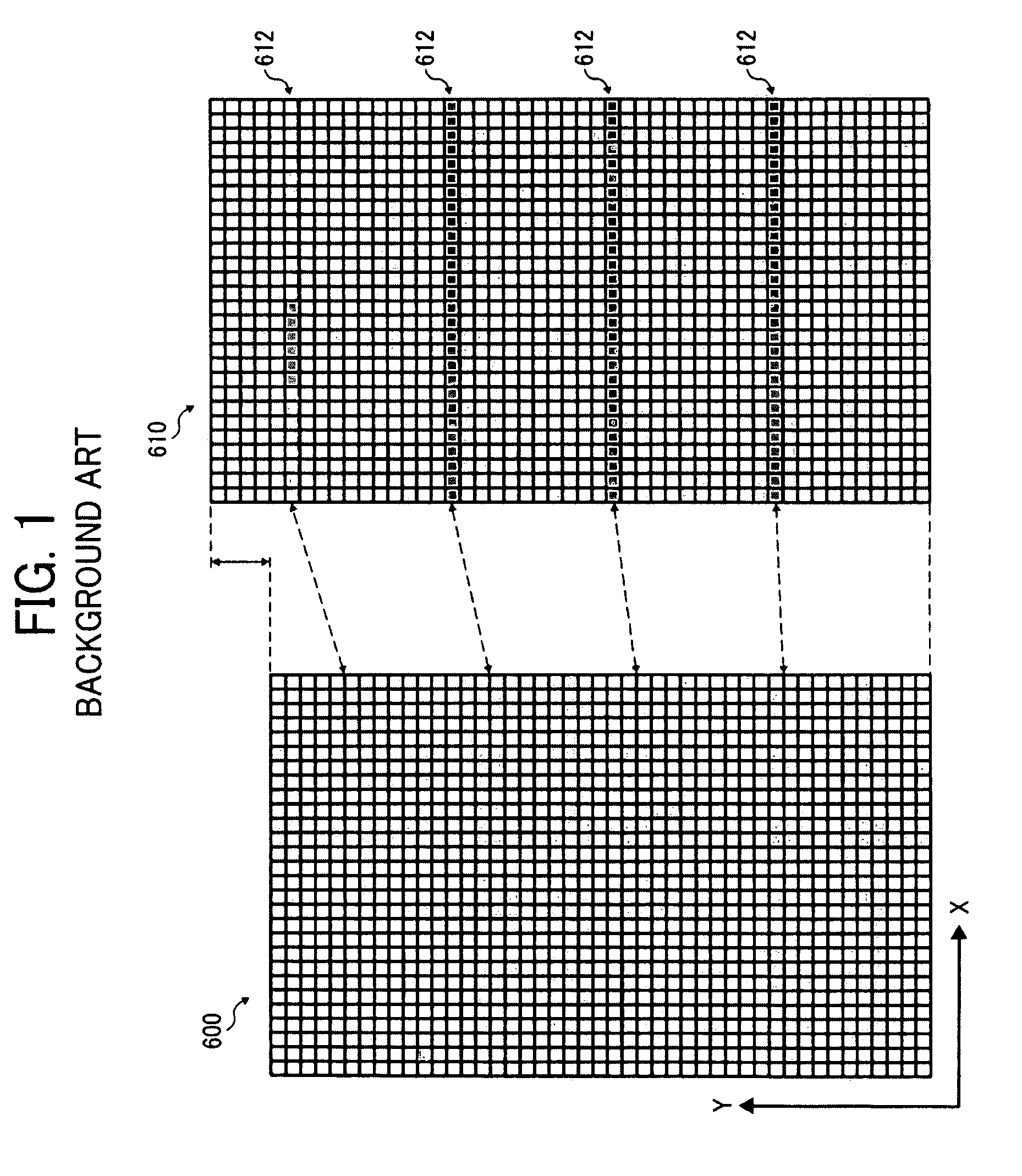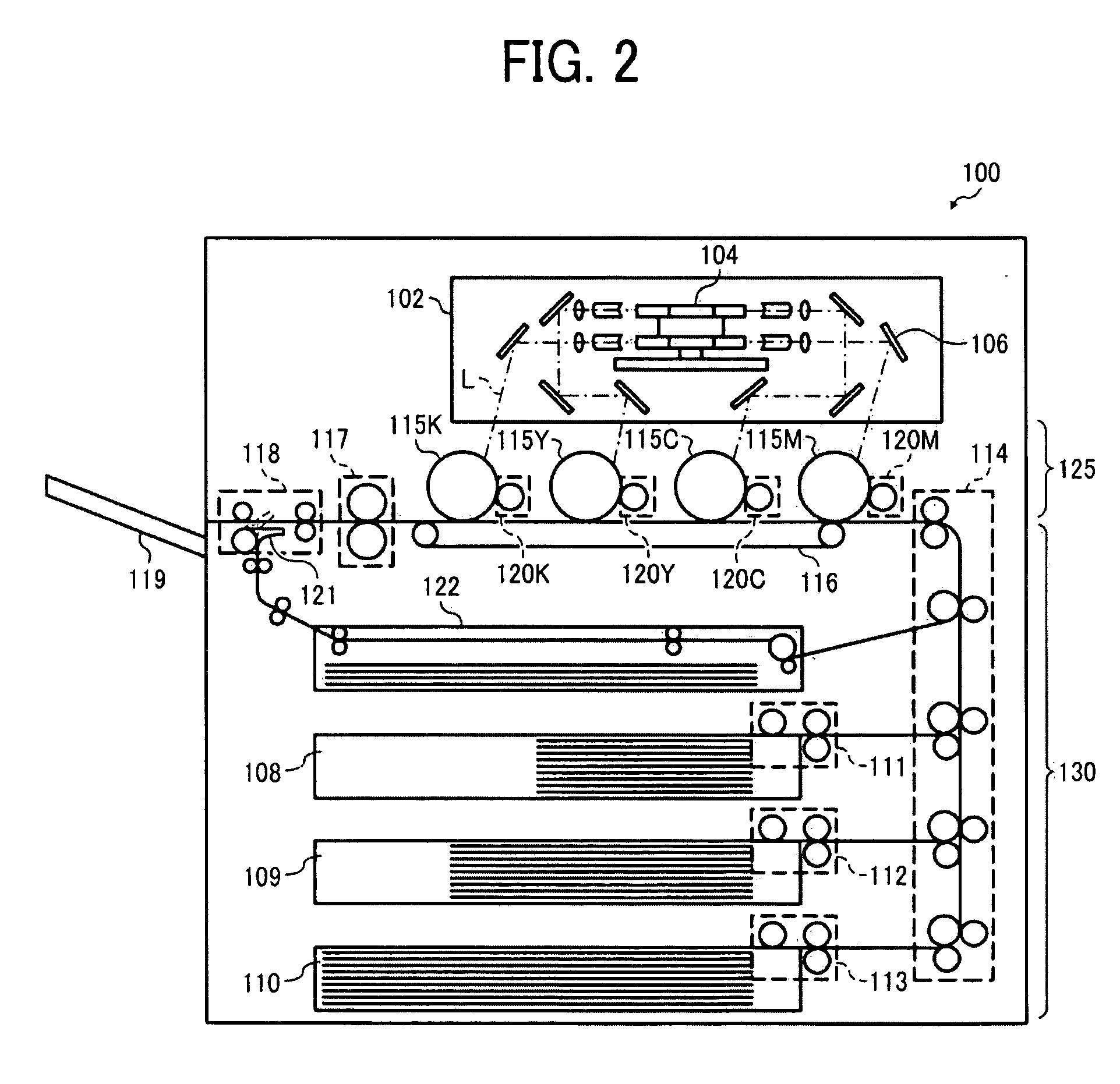Image processing system and image forming apparatus incorporating same
a technology of image processing system and image forming apparatus, which is applied in the direction of image enhancement, visual presentation using printers, instruments, etc., can solve the problems of reducing a time or a space interval, affecting the image quality, so as to increase the size of the image data and the effect of enlarge the image data
- Summary
- Abstract
- Description
- Claims
- Application Information
AI Technical Summary
Benefits of technology
Problems solved by technology
Method used
Image
Examples
experiment 1.1
[0131]The aim of Experiment 1.1 is to investigate how the insertion position and the intensity of inserted pixels affect the efficacy of the scaling operation according to this patent specification, involving images created from image data prepared through screening and size adjustment processes. The conditions of the experiment are given in Example 1 as follows.
example 1
[0132]Binary image data was prepared through screening process to have a resolution of 1,200 dpi with a horizontal line screen of 200 lpi. Size adjustment was performed on the prepared data using various settings so as to obtain different sets of sample image data each of which is enlarged by 2% from the original.
[0133]FIG. 11A shows a portion of the initial data (A0), and FIG. 11B shows corresponding portions of the sample data sets (A1, A2, and A3).
[0134]As shown in the drawing, the initial data A0 has 2 scan lines of foreground pixels or image area in every 6 scan lines corresponding to 1 screen period. Each of the enlarged versions A1 through A3 has an additional 1 scan line on or across the 2-pixel image area after every 8 screen periods.
[0135]The following briefly describes the data samples A1 through A3 obtained in Experiment 1.1.[0136]A1: Each additional scan line was formed of background pixels and inserted next to but not across the 2-pixel image area.[0137]A2: Each additi...
experiment 1.2
[0141]The aim of Experiment 1.2 is to investigate how the effective resolution of the image forming apparatus relative to the theoretical resolution of the image data affects the efficacy of the scaling operation according to this patent specification, using images created from image data prepared through screening and size adjustment processes. The conditions of the experiment are given in Comparative Examples 1 through 3 as follows.
PUM
 Login to View More
Login to View More Abstract
Description
Claims
Application Information
 Login to View More
Login to View More - R&D
- Intellectual Property
- Life Sciences
- Materials
- Tech Scout
- Unparalleled Data Quality
- Higher Quality Content
- 60% Fewer Hallucinations
Browse by: Latest US Patents, China's latest patents, Technical Efficacy Thesaurus, Application Domain, Technology Topic, Popular Technical Reports.
© 2025 PatSnap. All rights reserved.Legal|Privacy policy|Modern Slavery Act Transparency Statement|Sitemap|About US| Contact US: help@patsnap.com



